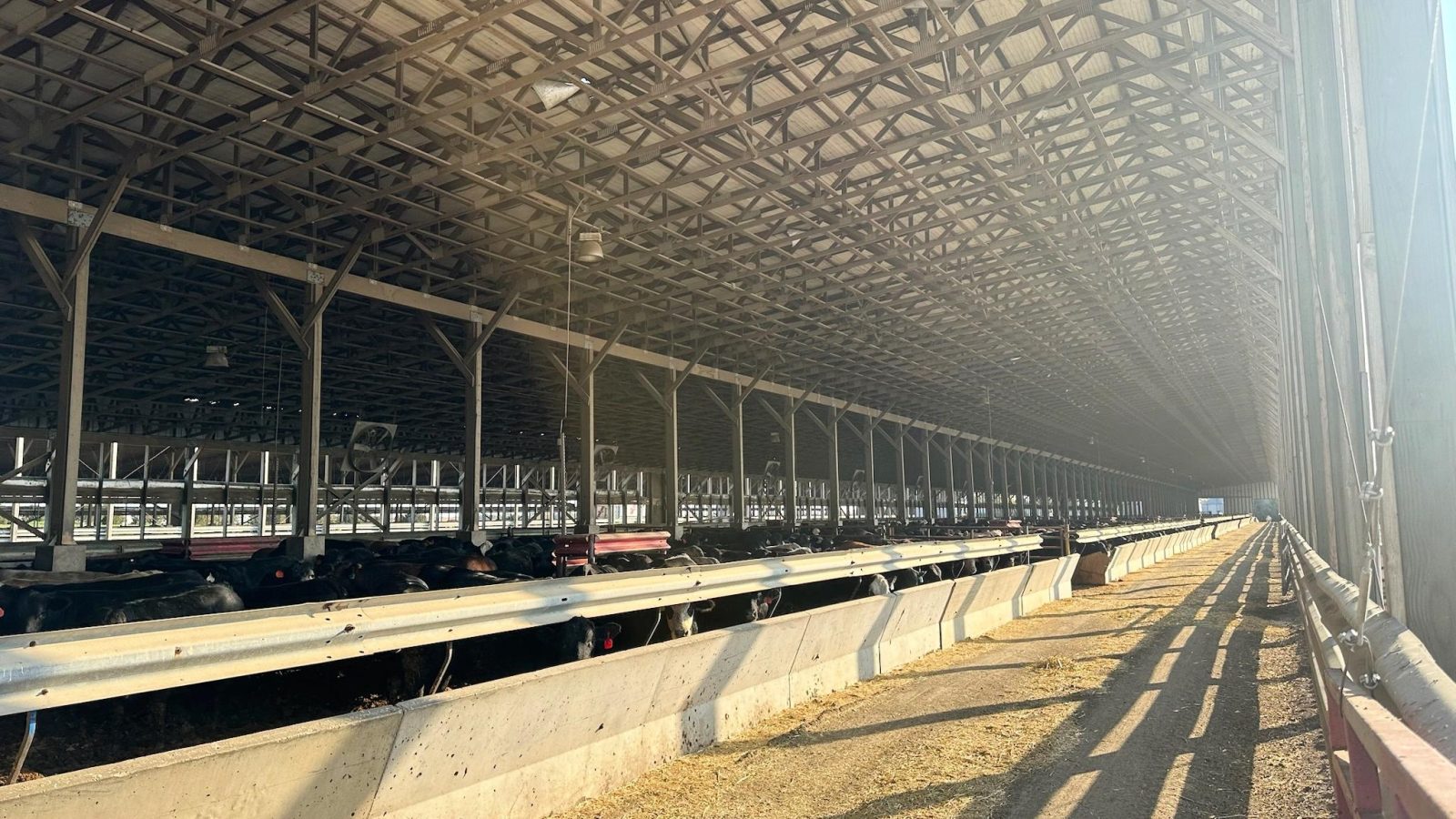
The number of on-farm anaerobic digester systems in the United States has been steadily rising since 2000, according to [1]AgSTAR, a collaborative program sponsored by the Environmental Protection Agency and USDA. As of June 2024, there were 400 operational manure-based projects across the country, converting farm waste into valuable resources while reducing greenhouse gas emissions. USSA had the opportunity to visit one such site with a group of EU officials for first-hand insights into the environmental benefits of anaerobic digestion.
Established in 1873, Sievers Family Farms in Stockton, Iowa, exemplifies sustainable agriculture through its circular approach. The fifth-generation farm grows corn, soy, hay, and cereal rye cover crops, and operates a beef feedlot on approximately 1,000 hectares of land.
Over a decade ago, a decision to grow the business led husband-and-wife team Bryan and Lisa Sievers to take a new, more circular path.
They planned to add two new barns to increase their feedlot capacity from 400 to more than 2,400 head of cattle. However, they were concerned about the additional animal waste this six-fold expansion would bring, not to mention its carbon footprint.
Their solution was to install two anaerobic digesters, each with a volume of 970,000 gallons, to manage the waste and reuse it in their operation. The digesters process manure and other organic substrates, including food waste from local food processors, corn stover and cereal rye straw harvested from the surrounding fields, and, more recently, biomass from their cover crops, to capture methane and generate biogas. This biogas powers a Combined Heat and Power Plant (CHP) unit.
The system produces enough electricity to run the expanded feedlot, and the farm sells any surplus electricity to the local grid. In addition, the solid byproduct from the anaerobic digesters is used for animal bedding and compost, and the liquid byproduct serves as fertilizer, which has significantly improved soil quality on the farm.
Lisa Sievers says that before they started using the nutrient-rich byproduct from their closed-loop system, the soil quality indicators on their land were at 3.5 percent. Ten years later, they’ve reached 4.5 percent, which is just shy of their ultimate goal of five percent.
Bryan Sievers added, “The impact we’ve seen already on soil health and air and water quality has been tremendous. We have seen our organic matter content increase by at least one percent in 10 years from the use of the digestate that comes from the anaerobic digestion process. The increase in organic matter content reverses a 150+ year trend of declining organic matter levels. As a result, our 2024 corn yields have increased to averages that exceed 300 bushels per acre in many cases. Our soybean yields have responded equally well to the use of the digestate as our fertilizer source in the production of our crops. It’s very gratifying to know we can leave the land in much better condition than when we started farming.”
[1] https://www.epa.gov/agstar/agstar-data-and-trends#adfacts


